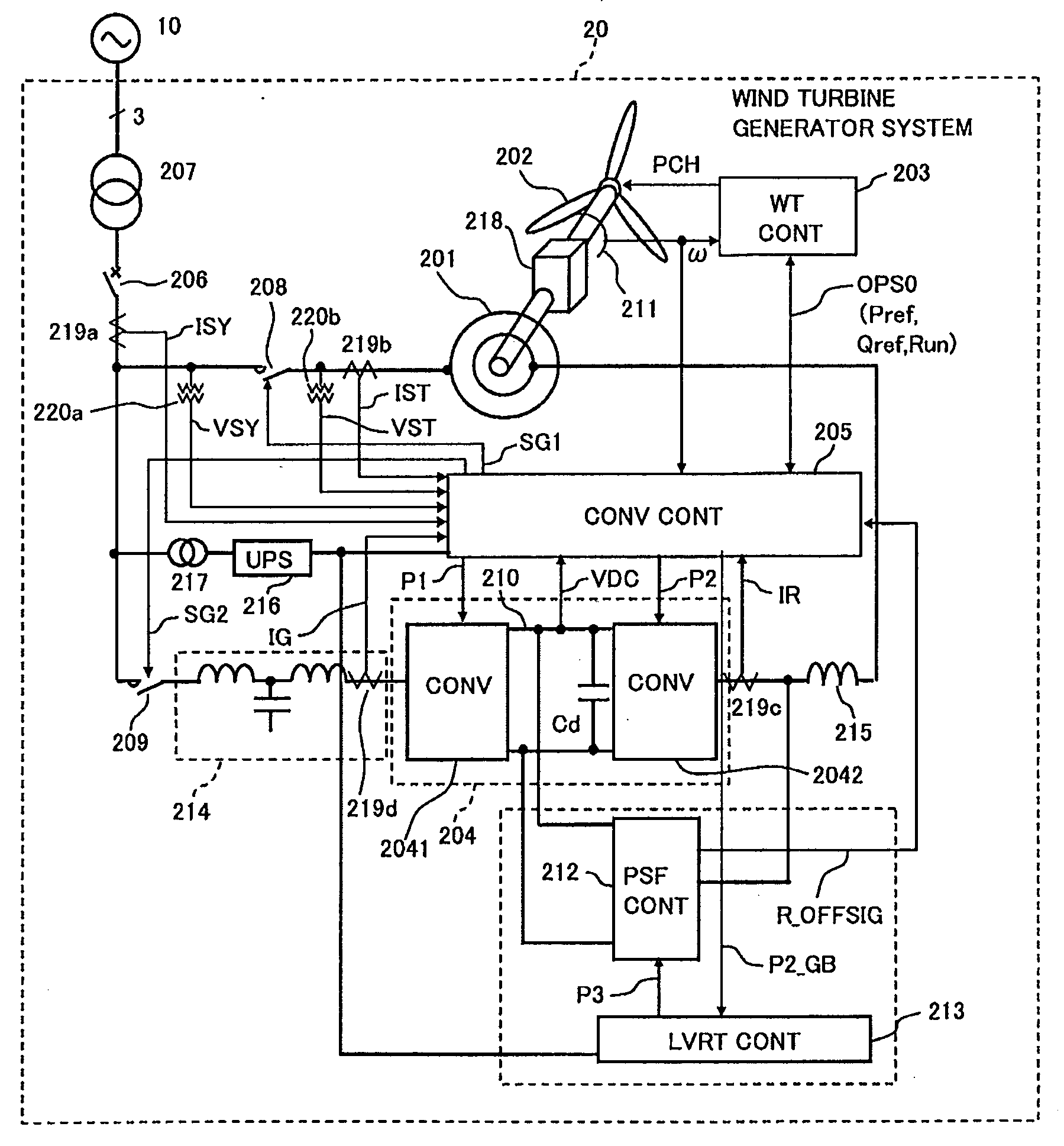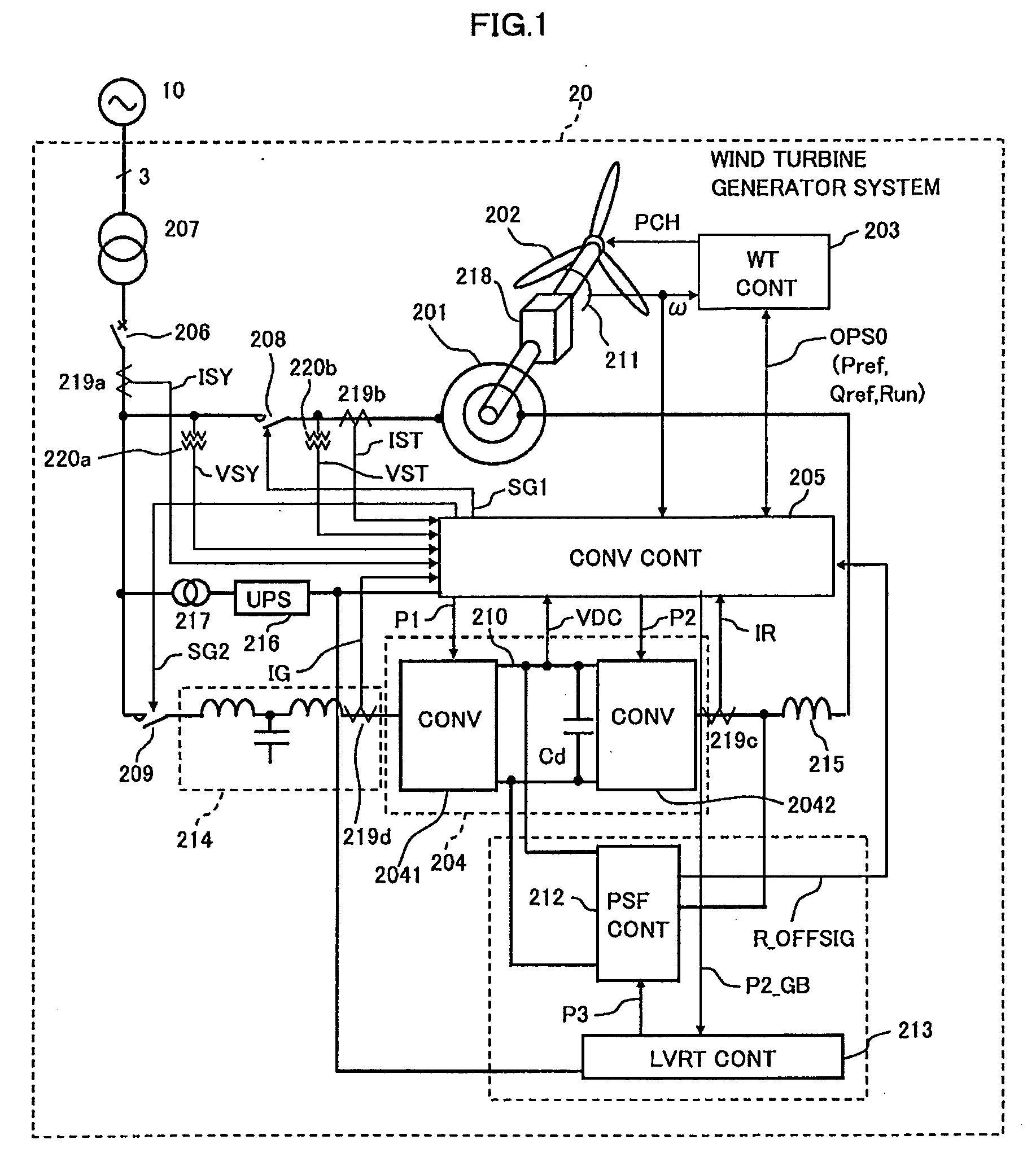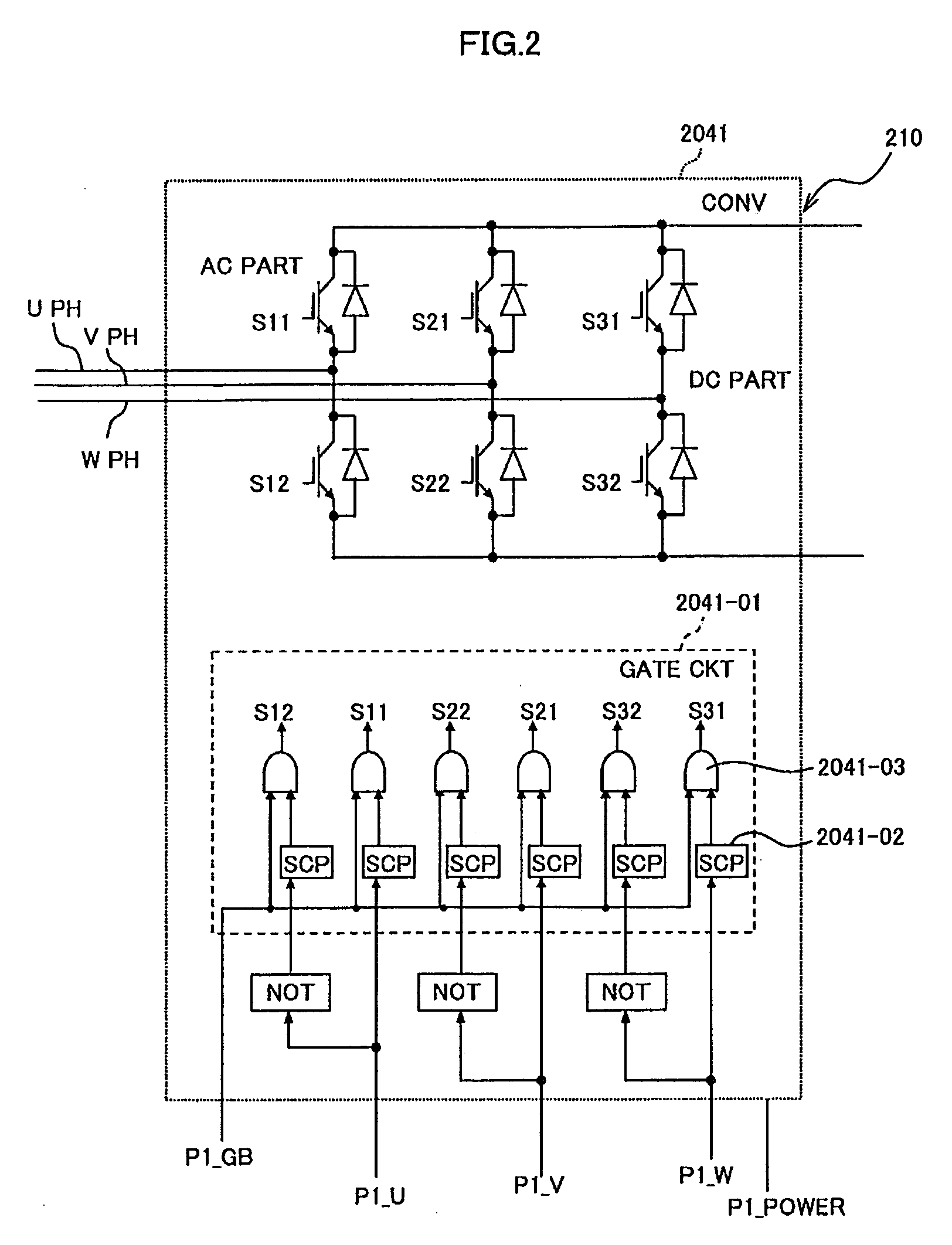Wind turbine generator system
- Summary
- Abstract
- Description
- Claims
- Application Information
AI Technical Summary
Benefits of technology
Problems solved by technology
Method used
Image
Examples
first embodiment
[0039]With reference to FIG. 1 (single wire circuit diagram) will be described a first embodiment of a wind turbine generator system according to the present invention.
[0040]A wind turbine generator 20 is connected to a grid 10 through transmission lines. The wind turbine generator system 20 mainly includes an AC-excited generator (doubly-fed induction machine) 201, blades 202, a wind turbine controller 203, a converter unit 204, a converter controller 205, a power system failure response circuit 212, and a power system failure response circuit controller (LVRT CONT) 213.
[0041]The blades 202 are mechanically coupled to the rotor of the generator 201 through gears 218.
[0042]Rotor windings of the generator 201 are electrically connected to the converter unit 204. A stator of the generator 201 is electrically connected to the gird 10 through a breaker 206 and a transformer 207, etc.
[0043]The wind turbine controller 203 calculates operation command signals OPS0 such as detecting a wind ...
second embodiment
[0139]FIG. 14 shows a second embodiment of the present invention. A wind turbine generator system according to the second embodiment is different in that the converter controller 205 directly transmits a resistor connecting signal OPS2 to the power system failure response circuit controller 213. In the first embodiment, the ON status holding circuit 2124 in the power system failure response circuit 212 determines timing of connecting and disconnecting the resistor R2. In the second embodiment, the resistor connecting signal OPS2 outputted by the converter controller 205 determines timing of connecting and disconnecting the resistor R2.
[0140]FIG. 15 shows configuration of the converter controller 205. The converter controller according to the second embodiment is different from that according to the first embodiment shown in FIG. 1 is that the monitoring loop process CTL_WTCH2 generates and sends the resistor connecting signal OPS2 to the power system failure response circuit 212.
[01...
third embodiment
[0148]FIG. 19 shows the converter controller 205 according to a third embodiment. The converter controller 205 according to the third embodiment is different from that shown in FIG. 15 is in that an inverter (NOT) and an AND gate (AND) are added to make the excessive current detection signal P2_GB in a stop status of “0” to monitor an excessive current upon the power system failure in an operation status.
[0149]FIG. 20 shows a flowchart of control operation of the generator side converter 2042, which is different from that show in FIG. 18 in that the excessive current upon a power system failure is monitored in the operation mode. When the excessive current detection signal P2_GB=1, it is determined that there is no excessive current. Further, in the third embodiment, it is further monitored whether the grid voltage decreases and DC voltage increases. When it is detected that the grid voltage decreases and the DC voltage (Cd) increases, a process of connecting the resistors R2 and R3...
PUM
 Login to View More
Login to View More Abstract
Description
Claims
Application Information
 Login to View More
Login to View More - R&D Engineer
- R&D Manager
- IP Professional
- Industry Leading Data Capabilities
- Powerful AI technology
- Patent DNA Extraction
Browse by: Latest US Patents, China's latest patents, Technical Efficacy Thesaurus, Application Domain, Technology Topic, Popular Technical Reports.
© 2024 PatSnap. All rights reserved.Legal|Privacy policy|Modern Slavery Act Transparency Statement|Sitemap|About US| Contact US: help@patsnap.com










